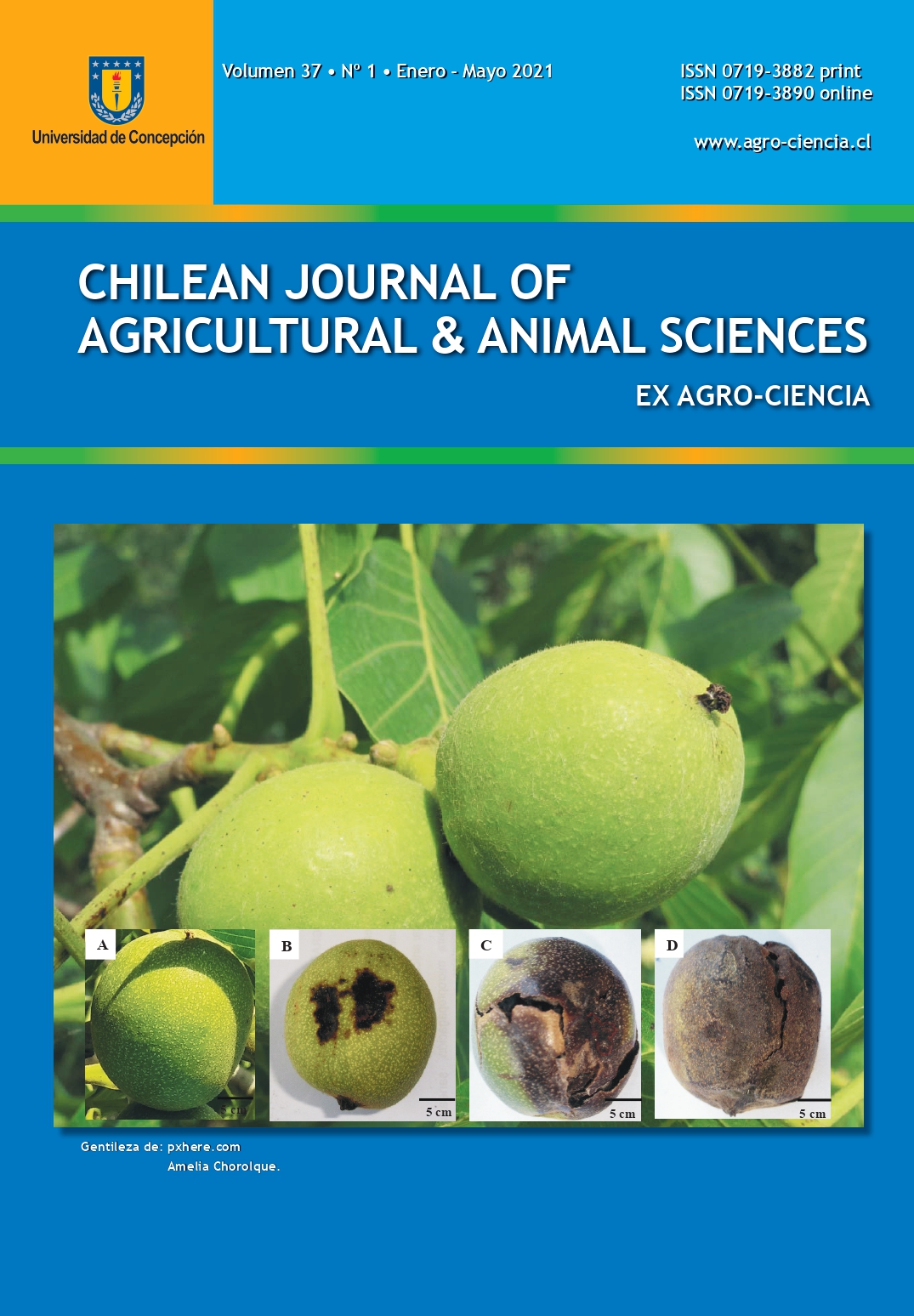Ver ítem
- xmlui.general.dspace_homeCentros Regionales y EEAsCentro Regional MisionesEEA Cerro AzulArtículos científicosxmlui.ArtifactBrowser.ItemViewer.trail
- Inicio
- Centros Regionales y EEAs
- Centro Regional Misiones
- EEA Cerro Azul
- Artículos científicos
- Ver ítem
Polvo de ladrillo como sustrato para techos verdes extensivos
Resumen
Los techos verdes extensivos (TVE) contienen menos de 15 cm de sustrato, el cual debe ser estable, con baja densidad, alta aireación y suficiente retención de agua y nutrientes para el adecuado desarrollo vegetal. En busca de componentes alternativos para formular este tipo de sustratos, el objetivo de este trabajo fue evaluar sustratos con polvo de ladrillo y su efecto sobre el crecimiento de especies del género Sedum L. El ensayo fue conformado por
[ver mas...]
Los techos verdes extensivos (TVE) contienen menos de 15 cm de sustrato, el cual debe ser estable, con baja densidad, alta aireación y suficiente retención de agua y nutrientes para el adecuado desarrollo vegetal. En busca de componentes alternativos para formular este tipo de sustratos, el objetivo de este trabajo fue evaluar sustratos con polvo de ladrillo y su efecto sobre el crecimiento de especies del género Sedum L. El ensayo fue conformado por cuatro tratamiento/sustratos compuestos por piedra pómez (P), microleca (M), perlita (Pe), turba de Sphagnum (T), zeolita enriquecida (Z) y polvo de ladrillo (PL) en volúmenes indicados por los subíndices: 1) P20:M25:Pe40:Z15; 2) PL85:Z15; 3) P20:M25:Pe30:Z15:T10; y 4) PL75:Z15:T10. Se confeccionaron tres mesadas divididas en cuatro unidades experimentales de 1,2 m2. Las especies del género Sedum evaluadas fueron S. acre, S. alba, S. mexicanum y S. ruflexum. Se realizó análisis físicos y químicos a todos los sustratos. A cada planta se midió la superficie (cm2) cubierta por la parte vegetativa y la supervivencia. Todos los sustratos tuvieron un valor de pH superior a 6,3 y un valor inicial de conductividad eléctrica alto, pero menor al final del ensayo. La porosidad y aireación en todos los sustratos fue mayor que la capacidad de retención de agua. La superficie cubierta por S. acre fue mayor en el sustrato PL75:Z15T10, y por S. alba en los sustratos P20:M25:Pe40:Z15 y PL75:Z15T10. Sedum mexicanum cubrió menor superficie en el sustrato PL85:Z15, y con S. reflexum no hubo diferencias significativas (P : 0,6114). El polvo de ladrillo se muestra como una alternativa viable para su uso en TVE. Palabras clave: Techo verde, sustrato, polvo ladrillo, Sedum, sustentable, residuo de construcción, medio de cultivo.
[Cerrar]
Extensive green roofs (EGR) contain less than 15 cm of substrate, which must be stable, with low density, high aeration and sufficient water and nutrient retention for adequate plant development. In search of alternative components to formulate this type of substrates, the objective of this work was to evaluate substrates with brick dust and its effect on the growth of species of the genus Sedum L. The trial consisted of four treatments/substrates
[ver mas...]
Extensive green roofs (EGR) contain less than 15 cm of substrate, which must be stable, with low density, high aeration and sufficient water and nutrient retention for adequate plant development. In search of alternative components to formulate this type of substrates, the objective of this work was to evaluate substrates with brick dust and its effect on the growth of species of the genus Sedum L. The trial consisted of four treatments/substrates composed of pumice stone (P), microleca (M), perlite (Pe), Sphagnum peat (T), enriched zeolite (Z) and brick dust (PL) in volumes indicated by the subscripts: 1) P20:M25:Pe40:Z15; 2) PL85:Z15; 3) P20:M25:Pe30:Z15:T10; and 4) PL75:Z15:T10. Three tables were made and divided into four experimental units of 1.2 m2. The Sedum species evaluated were S. acre, S. alba, S. mexicanum and S. ruflexum. Physical and chemical analyzes were carried out on all substrates. The surface area (cm2) covered by the vegetative part and survival was measured for each plant. All substrates had a pH value greater than 6.3 and a high initial electrical conductivity value, but low at the end of the trial. The aeration porosity in all substrates was greater than the water retention capacity. The surface covered by S. acre was greater in the substrate PL75: Z15T10 and by S. alba in the substrates P20: M25: Pe40: Z15 and PL75: Z15T10. Sedum mexicanum covered less surface in the substrate PL85:Z15, and no differences were observed with S. reflexum (P: 0.6114). Brick dust is a viable alternative for use in EGR.
[Cerrar]

Fuente
Chilean Journal of Agricultural & Animal Sciences 37 (1) : 81-91. (2021)
Fecha
2021
Editorial
Facultad de Agronomía, Universidad de Concepción (Chile)
ISSN
0719-3882
0719-3890
0719-3890
Formato
pdf
Tipo de documento
artículo
Palabras Claves
Derechos de acceso
Abierto
 Excepto donde se diga explicitamente, este item se publica bajo la siguiente descripción: Creative Commons Attribution-NonCommercial-ShareAlike 2.5 Unported (CC BY-NC-SA 2.5)
Excepto donde se diga explicitamente, este item se publica bajo la siguiente descripción: Creative Commons Attribution-NonCommercial-ShareAlike 2.5 Unported (CC BY-NC-SA 2.5)


